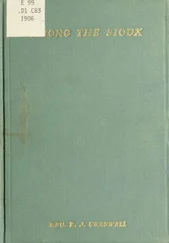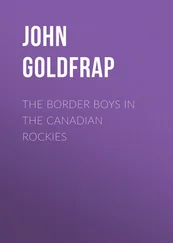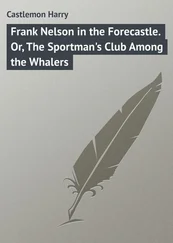Lawrence Burpee - Among the Canadian Alps
Здесь есть возможность читать онлайн «Lawrence Burpee - Among the Canadian Alps» — ознакомительный отрывок электронной книги совершенно бесплатно, а после прочтения отрывка купить полную версию. В некоторых случаях можно слушать аудио, скачать через торрент в формате fb2 и присутствует краткое содержание. Жанр: foreign_antique, foreign_prose, на английском языке. Описание произведения, (предисловие) а так же отзывы посетителей доступны на портале библиотеки ЛибКат.
- Название:Among the Canadian Alps
- Автор:
- Жанр:
- Год:неизвестен
- ISBN:нет данных
- Рейтинг книги:3 / 5. Голосов: 1
-
Избранное:Добавить в избранное
- Отзывы:
-
Ваша оценка:
- 60
- 1
- 2
- 3
- 4
- 5
Among the Canadian Alps: краткое содержание, описание и аннотация
Предлагаем к чтению аннотацию, описание, краткое содержание или предисловие (зависит от того, что написал сам автор книги «Among the Canadian Alps»). Если вы не нашли необходимую информацию о книге — напишите в комментариях, мы постараемся отыскать её.
Among the Canadian Alps — читать онлайн ознакомительный отрывок
Ниже представлен текст книги, разбитый по страницам. Система сохранения места последней прочитанной страницы, позволяет с удобством читать онлайн бесплатно книгу «Among the Canadian Alps», без необходимости каждый раз заново искать на чём Вы остановились. Поставьте закладку, и сможете в любой момент перейти на страницу, на которой закончили чтение.
Интервал:
Закладка:
Even more significant are the words of Lord Bryce, late ambassador to the United States: "Let us think of the future. We are the trustees of the future. We are not here for ourselves alone. All these gifts were not given to us to be used by one generation or with the thought of one generation only before our minds. We are the heirs of those who have gone before, and charged with the duty of what we owe to those who come after, and there is no duty which seems to be higher than that of handing on to them undiminished facilities for the enjoyment of some of the best gifts the Creator has seen fit to bestow upon His people."
III
IN AND ABOUT BANFF
BANFF is probably one of the most cosmopolitan communities in the world. Although its permanent population hardly exceeds one thousand, about 75,000 visitors registered during the season of 1913, coming from every out-of-the-way corner of the globe, Finland and Tasmania, the Isle of Man and the Fiji Islands, Siam, Korea and Japan, Norway, Egypt and the Argentine, New Zealand, Mexico, Turkey and Borneo. In fact, one is rather surprised to find no representative here from Greenland or Terra del Fuego. The bulk of these tourists of course come from other parts of Canada, from the United States, and from the United Kingdom, but practically every country in the world sends its quota, large or small, to this wonderful playground in the heart of the Canadian Rockies.
To accommodate all these visitors there are several comfortable hotels in Banff, notably the Banff Springs Hotel, and the Chateau Rundle. The Banff Springs Hotel, which has been repeatedly enlarged to meet the ever-increasing requirements of tourist traffic, stands on the summit of a rocky butte above the junction of the Bow and Spray Rivers, and commands a strikingly beautiful view to the eastward where the Bow has forced a passage between Tunnel Mountain and Mount Rundle. Bow Falls lie immediately beneath, and in the distance the Fairholme Range makes a splendid background.
Of the large number of tourists who visit the Canadian Alps, the majority do not get very far away from Banff. The reason is perhaps not hard to seek. At Banff they find, without any particular effort, delightful views of mountain scenery, with all the comforts and luxuries of eastern pleasure resorts. Comparatively short carriage drives over good roads take them to a dozen points of interest in the immediate neighbourhood. One of the most popular of these is the Cave and Basin, a mile or so up the valley of the Bow, where one may enjoy a plunge into the clear green waters of the pool. Other springs, with a much higher temperature, boil out of the upper slope of Sulphur Mountain, flowing over a series of brilliantly coloured terraces into natural limestone pools. Here, as well as at the Basin, bath-houses have been provided with every appliance for those who seek health or merely pleasure. The drive up to the springs, through the pines, and with ever-widening views of the enchanting valley, is well worth while for its own sake.
A much finer view, however, is to be had from the summit of Tunnel Mountain. One may drive, ride, or if he prefers a little moderate exercise, walk to the summit. The southern face of Tunnel Mountain drops in a sheer precipice nearly a thousand feet to the valley of the Bow. Beyond rises the rugged bulk of Rundle, with the Goat Range in the distance, the Spray winding as a silver thread down the valley, the Bow sweeping down from the northwest, a noble circle of peaks filling the horizon to the northwest and north, the Vermilion Lakes sparkling in their emerald setting, and around to the northeast, a glimpse of Lake Minnewanka.
With a fishing rod, and any other congenial companion, an enjoyable canoe trip may be had to Vermilion Lakes. The way lies up the Bow to Echo Creek, and by this miniature waterway to the lakes. As an afternoon's paddle nothing more delightful could be imagined, and the fishing is excellent, but the really serious fisherman will prefer the longer trip to Lake Minnewanka where lake trout are to be had of fighting temper and phenomenal size. Fourteen fish of a total weight of forty-three pounds represented one day's catch of a couple of sportsmen in this lake; sixteen caught the following day weighed forty-eight pounds. These, however, were pygmies beside the gigantic trout landed by Dr. Seward Webb in 1899, which tipped the scales at forty-seven pounds. To silence the incredulous, this monster is still preserved in a glass case at the Minnewanka Chalet.
A drive of nine miles from Banff, skirting the base of Cascade Mountain, lands the traveller on the shores of Lake Minnewanka. On the way he may visit a herd of about 25 buffalo, and enjoy the view from the rustic bridge down into the Devil's Canyon. The lake is some sixteen miles in length, and one may explore it either in a boat or by chartering the launch provided by the Canadian Pacific Railway. It swings, in the shape of a great sickle, around the base of Mount Inglismaldie, whose dizzy precipices soar some thousands of feet into the sky, with the glorious pinnacles of Mount Peechee in the background.
Another delightful drive leads past the Cave and Basin and around the northern end of Sulphur Mountain to Sundance Canyon, a weird little gorge through which Sundance Creek rushes down to its junction with the Bow. The plateau above the gorge was at one time a favourite Indian camping ground, and the scene of the barbaric Sun Dance.
On the northern bank of the Bow, high up above the river, stand a number of those fantastic natural monuments called Hoodoos, an excellent view of which may be gained by taking the drive around the Loop to the foot of Mount Rundle.
So far we have been confined to points of interest at no great distance from the village of Banff, and reached in each case by well-built carriage roads. Back and forth over these roads throughout the season drive streams of pilgrims, absorbing to a greater or less extent the manifold beauties of mountain, lake and river, wild canyon and sunny meadow, sombre pine woods and mountain slopes blazing with the rainbow colours of countless wildflowers; but above all, drinking in the glorious sunlight and revivifying air of the mountains. The great majority will always prefer to worship nature from the comfortable if somewhat crowded seat of a tally-ho, with a luxurious hotel to return to in the evening, and after all why should one blame them; but there will always be some who prefer the wild mountain trail to the macadamized road, the cayuse with all his idiosyncrasies to the upholstered coach, and the camp-fire to all the luxuries of a modern hotel.
Fortunately there are to-day, and will be for some years to come, many miles of trail for each mile of road within the confines of the Canadian National Parks. The present policy seems to be to gradually develop the trails into carriage roads, but one may venture the hope that this policy will not be carried too far. The thought of driving to the foot of Mount Assiniboine on a motor bus, and having its glories profaned by a professional guide perhaps through a megaphone, is too painful to admit.
The evolution of mountain roads is an interesting problem in itself. The foundation is nearly always an Indian trail, one of those ancient thoroughfares that run hither and thither throughout the mountains, following the courses of innumerable streams, and winding up over mountain passes and down again to the valleys that lie beyond. There is a peculiar thrill of excitement in falling unexpectedly upon one of these relics of other days. The imagination leaps back to the time when Indian hunters followed them in search of elk and deer, mountain goat and bighorn. With the exception of a handful of Stonies, whose days are numbered, the Indian no longer hunts in the mountains; and the trails he once followed are now mostly covered with underbrush or blocked with fallen timber.
Читать дальшеИнтервал:
Закладка:
Похожие книги на «Among the Canadian Alps»
Представляем Вашему вниманию похожие книги на «Among the Canadian Alps» списком для выбора. Мы отобрали схожую по названию и смыслу литературу в надежде предоставить читателям больше вариантов отыскать новые, интересные, ещё непрочитанные произведения.
Обсуждение, отзывы о книге «Among the Canadian Alps» и просто собственные мнения читателей. Оставьте ваши комментарии, напишите, что Вы думаете о произведении, его смысле или главных героях. Укажите что конкретно понравилось, а что нет, и почему Вы так считаете.












